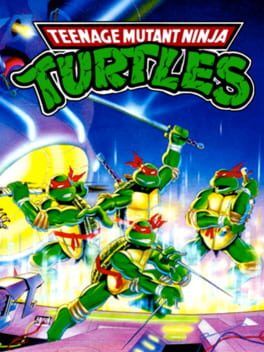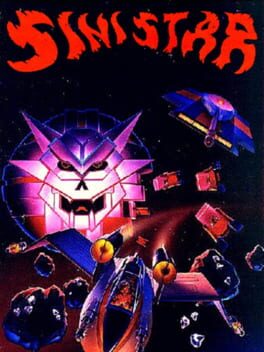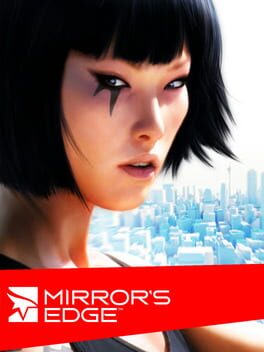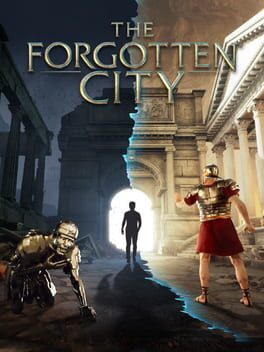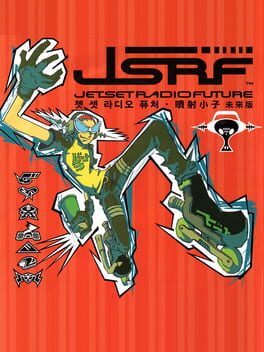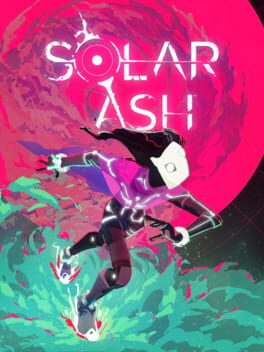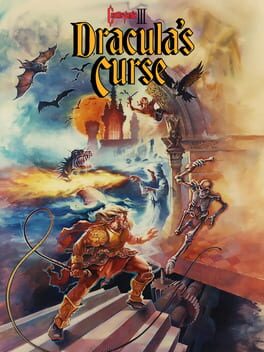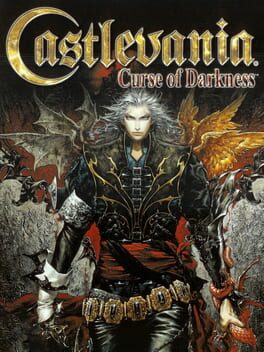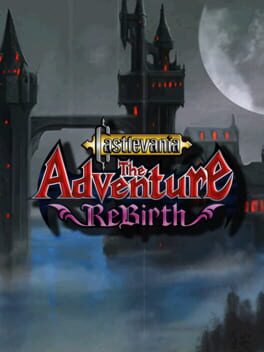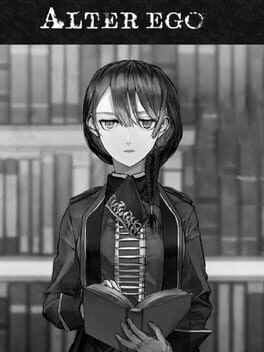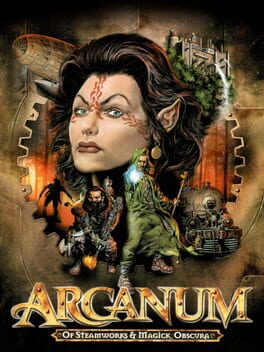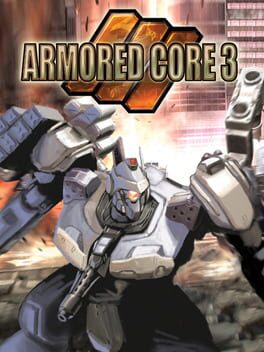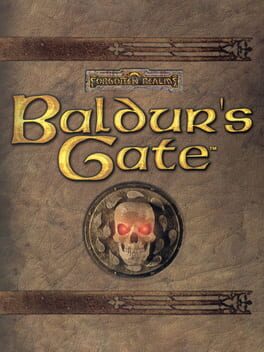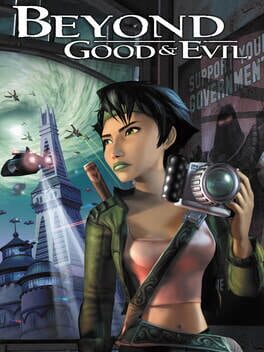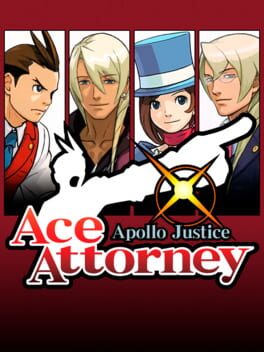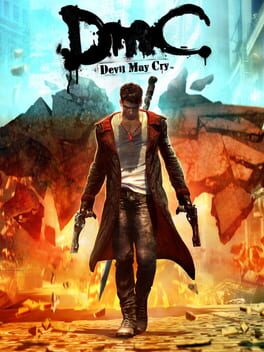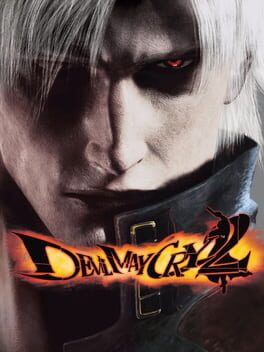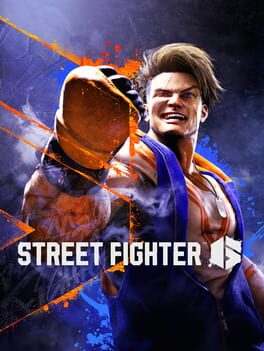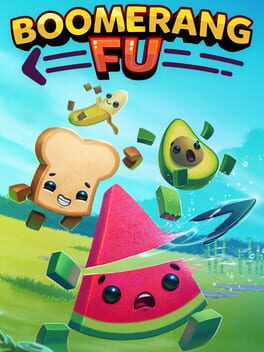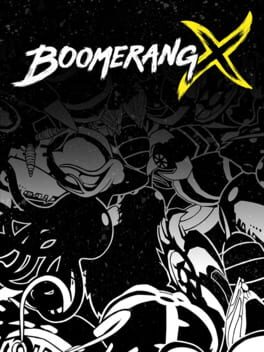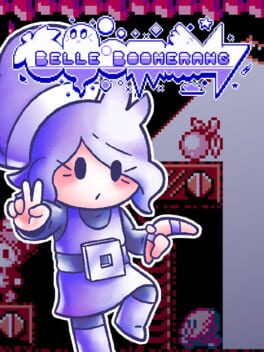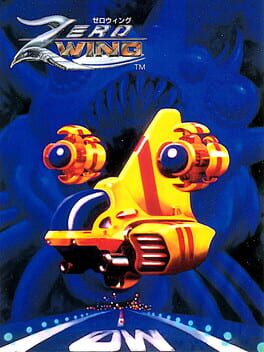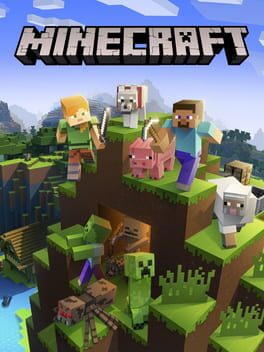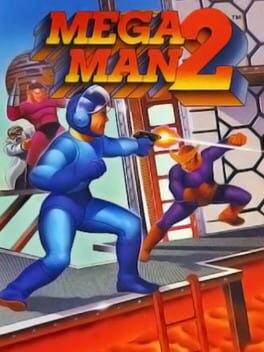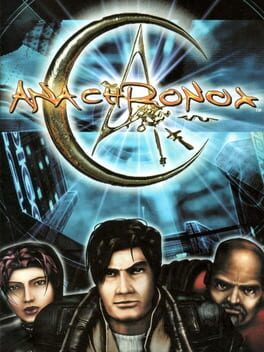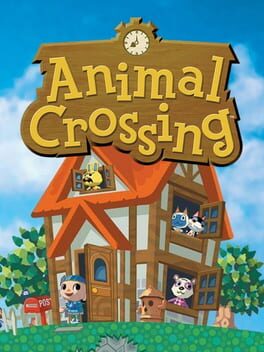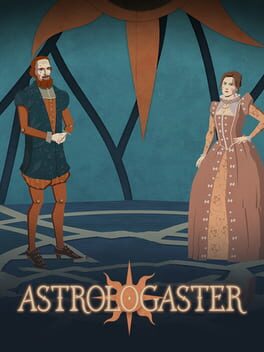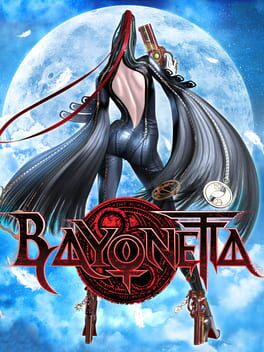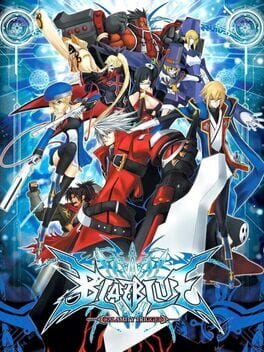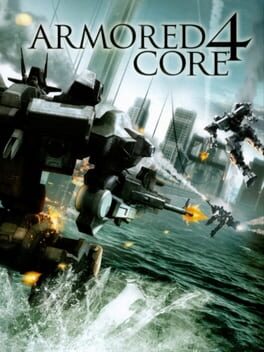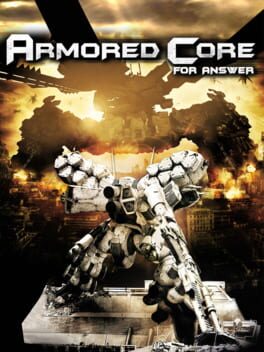Erockthestrange
42 reviews liked by Erockthestrange
Pokémon Channel
2003
I'm going to resist writing a shitpost review just this once to point out how comically bad this game is. To this day, I remain absolutely appalled how this somehow got greenlit and still sold 380,000 copies. I'm trying to visualize how the pitch must have gone:
"Hey, let's make a Pokemon Game that's actually about watching shows!"
"So... the Pokemon anime?"
"Well yes... but also no! Let's also throw in RNG based card collecting mechanics, time stalling tactics such as the need to completely rely on Pikachu to complete simple tasks AND ask for permission for every task, have 1 minute screen transitions between each area as you wait for Pikachu to run on over and then dab on you, and make it so if you don't zoom in on the screen, Pikachu can fiddle with your touch screen television and answer questions incorrectly for you AND buy expensive shit off the shopping channel using your own money!"
"holy SHIT you absolute mad lad this sounds like the greatest video game ever made with tons of immersive and gripping gameplay let's head to the races and make the big bucks :DDDDDDDDDD"
The subliminal messaging is what really kills me. As the name suggests, everything in your life revolves around the television. Pikachu gets pissed if you turn the television off, and asks you at some point to learn how to turn the television on with this dumb smile on its face every time it succeeds. There's even an unlockable channel that tracks how long you've been watching TV and how much money you've spent buying things, and makes fun of you if you're considered sub-par in either category! It's hilarious how this almost seems like a critique of 21st century commercialism and sedentary lifestyles... but then they play it straight and earnestly so it's actually part of the problem itself.
Honestly, the biggest problem is that it's super, super tedious. Which you'd already kinda expect from Pokemon, but it's somehow even worse because the draw is watching television (you know, while playing a video game) and everything is so drawn out; imagine Animal Crossing but the main activity is waiting instead of collecting resources or building new things. (Oh, and speaking of Animal Crossing, to progress the story, you'll often have to wait til the next day after submitting a full report. Might just want to change the GC console time instead.) Just to change the weather, you have to wait a solid few minutes for Slowpoke to walk on and off the screen until it decides to jab its tail onto a sign. Fishing is complete RNG watching Pikachu struggle to pull up a catch, just for that extra card. And if you want to immediately travel to a place that's not Viridian Forest, you're gonna have to wait at least a minute for the buses to change at the bus stop. And those are just three of the many examples of straight padding forced upon you in Pokemon Channel!
But hey, at least you get to make untold millions through selling Jirachi by playing Pokemon Channel over and over again (assuming you bought the PAL version; if you didn't, lmao)!
"Hey, let's make a Pokemon Game that's actually about watching shows!"
"So... the Pokemon anime?"
"Well yes... but also no! Let's also throw in RNG based card collecting mechanics, time stalling tactics such as the need to completely rely on Pikachu to complete simple tasks AND ask for permission for every task, have 1 minute screen transitions between each area as you wait for Pikachu to run on over and then dab on you, and make it so if you don't zoom in on the screen, Pikachu can fiddle with your touch screen television and answer questions incorrectly for you AND buy expensive shit off the shopping channel using your own money!"
"holy SHIT you absolute mad lad this sounds like the greatest video game ever made with tons of immersive and gripping gameplay let's head to the races and make the big bucks :DDDDDDDDDD"
The subliminal messaging is what really kills me. As the name suggests, everything in your life revolves around the television. Pikachu gets pissed if you turn the television off, and asks you at some point to learn how to turn the television on with this dumb smile on its face every time it succeeds. There's even an unlockable channel that tracks how long you've been watching TV and how much money you've spent buying things, and makes fun of you if you're considered sub-par in either category! It's hilarious how this almost seems like a critique of 21st century commercialism and sedentary lifestyles... but then they play it straight and earnestly so it's actually part of the problem itself.
Honestly, the biggest problem is that it's super, super tedious. Which you'd already kinda expect from Pokemon, but it's somehow even worse because the draw is watching television (you know, while playing a video game) and everything is so drawn out; imagine Animal Crossing but the main activity is waiting instead of collecting resources or building new things. (Oh, and speaking of Animal Crossing, to progress the story, you'll often have to wait til the next day after submitting a full report. Might just want to change the GC console time instead.) Just to change the weather, you have to wait a solid few minutes for Slowpoke to walk on and off the screen until it decides to jab its tail onto a sign. Fishing is complete RNG watching Pikachu struggle to pull up a catch, just for that extra card. And if you want to immediately travel to a place that's not Viridian Forest, you're gonna have to wait at least a minute for the buses to change at the bus stop. And those are just three of the many examples of straight padding forced upon you in Pokemon Channel!
But hey, at least you get to make untold millions through selling Jirachi by playing Pokemon Channel over and over again (assuming you bought the PAL version; if you didn't, lmao)!
Something this singularly focused and confident in what it’s setting out to achieve goes beyond a breath of fresh air and into the realm of interactive mouthwash. Nearly everything about Penny’s game encourages you to stay on the move at all times – it’s present in how the secret areas’ entryways outright throw you in or out, its main enemy type’s mode of attack being chasing you, her bouncy bunny-like outfit and the combo system rewarding you for every trick you pull, and it knows what a joy it is to do so to the point that its main collectibles reward with you with progressively zanier layouts to test your mastery of it in.
It all hinges on building and maintaining momentum, so it’s just as well that her toolkit feeds into both so intuitively. Comparisons to different platformers in this respect are easy – I got enough mileage out of her drop dash equivalent that I occasionally forgot she also has a spin dash one – but viewing this game through the lens of others is selling it short when her yo-yo swing’s the type of thing which makes returning to them initially feel weird for the lack of it. It’s so malleable it’s unreal: an on-demand boost whose strength’s proportional to her speed going into it, contextualised into her design, which can mantle up ledges or grab special items or correct jumps, all dependent on the angle at which you let go and the nearby geometry. Rarely will any two attempts at the same section of a level pan out the same way because of it alone, and that’s without delving into how fluidly almost all of her other manoeuvres interweave with it and what a complementary fit they are for stages so littered with half-pipes and slopes. By no means am I a capital P Penny gamer as of yet, but hopefully this shows what I mean to some degree.
I say “almost” for the same reason as the “nearly” at the start, because although it’s a resounding success at funnelling you into a flow state the vast majority of the time, one or two common interactions stand out as uncharacteristically finicky. The window for maintaining a combo when transitioning from a yo-yo swing into spinning on top of screws feels excessively strict, slightly marring how much I’m predisposed to love any control scheme which even vaguely reminds me of Ape Escape, while obstacles which require Penny to come to a stop (like tree catapults or giant drawers) seem incongruent with how you otherwise pretty much always want to be moving. I’m hesitant to criticise these aspects too much because all manner of unconventional games, not just skill-intensive ones like Penny’s, suffer too often from players’ tendencies to blame them for their own lack of willingness to meet them on their own terms, and knowing that levels can be beat in a single combo makes me think the relative discomfort of these moments is my own fault. Occasional collision issues and/or clipping through terrain are more unambiguously annoying, but in any case, stuff like this is only so conspicuous because everything else about how it plays is so bang on.
That’s similarly true of its levels themselves. While it’s a bit of a pity that the amount of levels per area vary so steeply – Industria and Tideswell, my two favourites in part for the Dynamite-Headdy-if-he-real visuals and being yet further evidence for why Tee Lopes should be made to compose every game ever, only have two levels each – any pacing issues this could’ve potentially resulted in are offset by what a smooth difficulty curve they result in when taken wholistically. The progression from early hazards like water, which can be manipulated to the player’s advantage via the point bonuses it offers by riding on top of it with enough speed, to the absolutely no-touchy electrical discharges powered by breakable lightbulbs in later areas creates this lovely feeling of the game taking its gloves off just as you’ve become acclimatised enough with its systems to no longer need the help. I initially found it frustrating that hazards like the latter hurt Penny if her yo-yo collides with them, but after sitting on it, I can now see that it’s just another example of what a unique platformer this is – substantially extending her hurtbox whenever you perform a trick causes you to really consider when and where to do so in a way that many others don’t really demand of you.
It's evocative of a larger point, which is that Penny’s Big Breakaway is the type of game we could all do with more of. It’s one that’s not afraid to be so out-there in both mechanics and visual design to the point of potentially being offputting for some. It’s one which tangibly takes enough inspiration from the like of Sonic or Mario Odyssey to feel immediately familiar on some level, yet also puts equally as much of its own spin on areas in which it shares common ground with bigger names to the extent that you can’t treat it like them. It’s one that’s in general so unabashedly itself that you can’t not respect it regardless of whether or not it’s to your personal taste, but if you’re at all into the kind of game which gives out as much as you put in and only becomes better as you yourself do, there’s too much on offer here executed to too high of a standard for it not to be.
To extend to it the highest praise in a more succinct way: in art direction, ethos and gameplay philosophy, this is essentially a fully 3D Mega Drive game. Breakaway indeed.
It all hinges on building and maintaining momentum, so it’s just as well that her toolkit feeds into both so intuitively. Comparisons to different platformers in this respect are easy – I got enough mileage out of her drop dash equivalent that I occasionally forgot she also has a spin dash one – but viewing this game through the lens of others is selling it short when her yo-yo swing’s the type of thing which makes returning to them initially feel weird for the lack of it. It’s so malleable it’s unreal: an on-demand boost whose strength’s proportional to her speed going into it, contextualised into her design, which can mantle up ledges or grab special items or correct jumps, all dependent on the angle at which you let go and the nearby geometry. Rarely will any two attempts at the same section of a level pan out the same way because of it alone, and that’s without delving into how fluidly almost all of her other manoeuvres interweave with it and what a complementary fit they are for stages so littered with half-pipes and slopes. By no means am I a capital P Penny gamer as of yet, but hopefully this shows what I mean to some degree.
I say “almost” for the same reason as the “nearly” at the start, because although it’s a resounding success at funnelling you into a flow state the vast majority of the time, one or two common interactions stand out as uncharacteristically finicky. The window for maintaining a combo when transitioning from a yo-yo swing into spinning on top of screws feels excessively strict, slightly marring how much I’m predisposed to love any control scheme which even vaguely reminds me of Ape Escape, while obstacles which require Penny to come to a stop (like tree catapults or giant drawers) seem incongruent with how you otherwise pretty much always want to be moving. I’m hesitant to criticise these aspects too much because all manner of unconventional games, not just skill-intensive ones like Penny’s, suffer too often from players’ tendencies to blame them for their own lack of willingness to meet them on their own terms, and knowing that levels can be beat in a single combo makes me think the relative discomfort of these moments is my own fault. Occasional collision issues and/or clipping through terrain are more unambiguously annoying, but in any case, stuff like this is only so conspicuous because everything else about how it plays is so bang on.
That’s similarly true of its levels themselves. While it’s a bit of a pity that the amount of levels per area vary so steeply – Industria and Tideswell, my two favourites in part for the Dynamite-Headdy-if-he-real visuals and being yet further evidence for why Tee Lopes should be made to compose every game ever, only have two levels each – any pacing issues this could’ve potentially resulted in are offset by what a smooth difficulty curve they result in when taken wholistically. The progression from early hazards like water, which can be manipulated to the player’s advantage via the point bonuses it offers by riding on top of it with enough speed, to the absolutely no-touchy electrical discharges powered by breakable lightbulbs in later areas creates this lovely feeling of the game taking its gloves off just as you’ve become acclimatised enough with its systems to no longer need the help. I initially found it frustrating that hazards like the latter hurt Penny if her yo-yo collides with them, but after sitting on it, I can now see that it’s just another example of what a unique platformer this is – substantially extending her hurtbox whenever you perform a trick causes you to really consider when and where to do so in a way that many others don’t really demand of you.
It's evocative of a larger point, which is that Penny’s Big Breakaway is the type of game we could all do with more of. It’s one that’s not afraid to be so out-there in both mechanics and visual design to the point of potentially being offputting for some. It’s one which tangibly takes enough inspiration from the like of Sonic or Mario Odyssey to feel immediately familiar on some level, yet also puts equally as much of its own spin on areas in which it shares common ground with bigger names to the extent that you can’t treat it like them. It’s one that’s in general so unabashedly itself that you can’t not respect it regardless of whether or not it’s to your personal taste, but if you’re at all into the kind of game which gives out as much as you put in and only becomes better as you yourself do, there’s too much on offer here executed to too high of a standard for it not to be.
To extend to it the highest praise in a more succinct way: in art direction, ethos and gameplay philosophy, this is essentially a fully 3D Mega Drive game. Breakaway indeed.
Sinistar
1983
Disco Elysium
2019
The great strength of Disco Elysium is this critical distance between the character and the player. In particular, it's the innovative mechanics of the inner monologues that force you to react according to the skills you have chosen. This is particularly subtle, but special mention must be made of the discussions with Klaasje, during which we know that our 'sensors' are being manipulated and giving incorrect information, if not for Volition managing to keep us on track. With this preliminary mention, it appears that Disco Elysium is a title that allows for almost infinite narrative creativity, since – as with the ideal role-playing game – the perception of the world is modified by our mental inclinations. The sense of detail is exceptional, so that the world reacts to our posture: eradicating The Expression and shaving will have effects on dialogue and how people view us, as will the use (or not) of illicit substances and the persona we choose to assume. While the title shines in its moments of absurdity, allowing for some particularly hillarious humour, it also has some very charming moments with a very pleasing metaphysical depth. Whether it's Pale's existential angst or Dora's acceptance of her choices, questions are posed across the screen about how one should live their life. As such, it is the whole political purpose of the game that attempts to answer this question. Disco Elysium doesn't hold back its blows against centrism, but the left-wing tones are greyed out. The Revolution failed, creating human wrecks, but yet the ideal was noble. More than ever, the title conjures up the unpleasant impression of an invisible hand – the Capital – coldly slaughtering individuals, without realising it. The rough and sublime prose is truly at the heart of this experience, a mark of the great CRPGs. Some would regret the ending, which contradicts the game's efforts to be a Golden Age whodunit, but this coincides with the metaphysical point it seeks to make. Disco Elysium comes across as an extraordinary experience, following in the footsteps of its illustrious predecessor, Planescape: Torment, with the twist of modernity and a political emphasis. It is, without doubt, a success.
Pseudoregalia
2023
Pseudoregalia strikes me as a short and satisfying 3D platformer, though I hesitate to call it succinct. Its core strength is its simple yet nuanced toolkit, as its multi-faceted movement options provide great depth. For example, the wall-kick serves an obvious purpose as a wall jump by kicking between two opposite walls, but you can also use the wall kick to alter your trajectory and gain more air-time. This can lead to exploits such as wall-kicking up corners to scale previously unreachable platforms, or wall-kicking just below ledges and immediately reversing your trajectory with another wall-kick to grab the ledge. As a result, the game's many obstacle courses never feel prohibitive and are not so much tied to specific upgrades as they are to the player's ability to execute movement tech, making exploration feel much more open-ended. Unfortunately, Pseudoregalia's exploration is stunted somewhat because it's super easy to get lost without any maps or checklists showing the player where to go/what's left to collect. The room layouts further exacerbate this confusion, because the overworld consists of many long branching tunnels instead of focusing on larger, more open areas that allow for hidden shortcuts. If all of the six main sectors had shortcuts to one another so I could access any section from any main hub (as opposed to wasting time mindlessly backtracking through the same central hubs), I think that my overall playtime would have been shortened by a solid hour or more.
Similarly, combat simply exists in Pseudoregalia, and could have been removed altogether with little consequence. Aside from two isolated bosses (one tutorial boss and one final boss), combat is usually unnecessary since most enemies can be easily avoided by constantly moving about. There's generally no tangible benefit to attacking enemies outside of restoring energy for healing. While there is an unlockable ability that lets you gain height while attacking enemies mid-air, I can't recall any real need to utilize this ability against moving foes outside of the collectible's immediate vicinity. The combat's superfluity becomes even more flagrant thanks to a few forced encounters: these tedious affairs require players to exterminate various spongey enemies to unlock a room's exits. As such, I think combat should be taken out while keeping invulnerable enemies around as a threat, and health restoration could be entirely tied to save crystals instead. I'd also be okay replacing the final boss with a final obstacle gauntlet forcing me to put all my movement tech to the test: while not a terrible fight, it felt a bit out of place relying on fairly restrained bait-and-punish + heal to defeat a final boss when I'd much rather be zipping about. Regardless, Pseudoregalia is a solid Steam debut for rittzler that's well worth the price of entry despite its lack of polish, and it's a game that I could see myself warming up to further with additional runs. I can't wait to see what they've got in mind for Electrokinetic.
Similarly, combat simply exists in Pseudoregalia, and could have been removed altogether with little consequence. Aside from two isolated bosses (one tutorial boss and one final boss), combat is usually unnecessary since most enemies can be easily avoided by constantly moving about. There's generally no tangible benefit to attacking enemies outside of restoring energy for healing. While there is an unlockable ability that lets you gain height while attacking enemies mid-air, I can't recall any real need to utilize this ability against moving foes outside of the collectible's immediate vicinity. The combat's superfluity becomes even more flagrant thanks to a few forced encounters: these tedious affairs require players to exterminate various spongey enemies to unlock a room's exits. As such, I think combat should be taken out while keeping invulnerable enemies around as a threat, and health restoration could be entirely tied to save crystals instead. I'd also be okay replacing the final boss with a final obstacle gauntlet forcing me to put all my movement tech to the test: while not a terrible fight, it felt a bit out of place relying on fairly restrained bait-and-punish + heal to defeat a final boss when I'd much rather be zipping about. Regardless, Pseudoregalia is a solid Steam debut for rittzler that's well worth the price of entry despite its lack of polish, and it's a game that I could see myself warming up to further with additional runs. I can't wait to see what they've got in mind for Electrokinetic.
The Last Guardian
2016
There seems to be a prevalent expectation that as games evolved, they also became exponentially more approachable. Higher budgets resulted in smoother graphics and fewer bugs. More complex controls (adding left/right triggers, then adding one/two joysticks, then dabbling with motion inputs, etc) gave players a firmer grasp over their characters. AI became more predictable as their algorithms became more intricate to capture a wider range of responses. In a sense, as the technology expanded, the resulting products seemingly became more streamlined to better suit the player’s needs while more thoroughly capturing a developer’s vision.
Team Ico has never been about following tradition, however. If anything, the evolution of their titles embodies the regression of player control, choosing to instead utilize technological advancements not just to refine its premise via "design by subtraction" as chump has pointed out, but to deliver an entirely new experience altogether. Ico was a classic tale of boy meets girl; the girl had to be freed from her cage and pulled around the castle, as the boy protected her against everything in her way to prevent her demise. Shadow of the Colossus, however, was a story concerned with the struggle over control. The lone wanderer, in his quest to revive Mono, hunts down various several-story colossi capable of swatting him about like a fly. In the resulting desperate dance of death, he at first struggles to climb their hulking figures, hanging on for dear life until he discovers their weak points and stabs the colossi while they helplessly flail about. In other words, it's a game about trying to regain any semblance of control until you realize after the fact that the only shadow left was the literal shadow cast by Wander over their fallen corpse.
The Last Guardian then, can be thought of as the natural evolution of Team Ico titles, in that it melds previous design sensibilities and thrives off of disempowering the player throughout its entirety. Trico, the player’s companion and a cross between cat and bird, is essentially the analog to Wander’s horse in Shadow of the Colossus, Agro. Fumito Ueda designed Agro as a companion rather than just a vehicle, and had his team develop specific movement algorithms that would allow Agro to steer herself without the player’s explicit control, forcing players to put their trust in their steed during certain fights emphasizing bow aiming. Ueda and his new team at GenDesign iterated upon this idea, explicitly creating environments where the player was forced to rely upon Trico’s actions to progress and thus establish dependency between the boy and his companion.
While the game can be thought of as an inversion of Ico in this sense, its design influence upon The Last Guardian should not go overlooked, particularly in how the game captures Ico’s physicality. Ico’s key strength was establishing a sense of presence through minimalist puzzles that lacked overly gamey elements, namely in how Ico interacted with his surroundings. Players are subtly guided into climbing chains, pulling levers, sitting on stone sofas to save, and most importantly, holding down R1 to hold Yorda by the hand around the castle and pull her out of danger whenever captured. The Last Guardian innovates upon this by combining several of the traversable elements and the companion into one. To better navigate the vast ruins, the boy must guide Trico and utilize their tall body of climbable feathers in order to scale heights, while occasionally dragging around their large tail and dangling it over ledges to safely climb down. Most importantly, you get to pet Trico whenever you feel like it to comfort your friend in both their happiest and most emotionally taxing moments. In both Ico and The Last Guardian, the player’s constant contact with both the environment and their companion keeps them firmly rooted within its constructed sense of reality by regularly reminding them of their companion’s physical presence.
This physicality would not be as significant without the lessons learned from Shadow of the Colossus however, not just regarding AI behavior but also specifically in how it adapts the game’s sense of scale. Trico is large, and the boy is small. As mentioned previously, Trico can utilize their size to lean against walls and give the boy a step up, but they can also utilize their weight to hold down large chains and swipe away at imposing bodies of armor. Meanwhile, the boy is much more agile and can fit into otherwise inaccessible small spaces by Trico, squeezing through narrow tunnels and gaps in metal gates to pull switches and let his partner through. This obvious difference in size creates consistent room for contrast, not just in how the two characters differ in terms of functionality but also in terms of their scale when measured against the traversed liminal spaces of the ruins, constantly transforming from immense empty rooms to constrained and suffocating tunnels and corridors.
What is particularly interesting is not just The Last Guardian’s disempowerment or sense of scale, but rather what it manages to achieve with said elements and the resulting contrast to establish interdependency between the two characters and solidify their relationship. The combat, an almost complete inverse of Ico’s combat, is the most obvious example. Rather than defending Yorda by whacking shadow enemies with a stick, the roles have been reversed, in that the player must rely upon Trico to guard against scores of possessed armor as to avoid getting kidnapped himself. Even so, the game plays around with this idea of vulnerability, shifting the onus of responsibility about as the boy often finds himself in positions where he must actively support or protect Trico, such as disposing of glass eyes that scare his friend or scrambling to pull a nearby switch to lower a bridge and give Trico room to climb up to safety. The game is even willing to occasionally break its own rules to demonstrate how this sense of caring evolves past its defined guidelines. In almost any other game, this mechanical inconsistency would be regarded as a flaw, but it is this sense of doubt that creates room for the relationship to build from in the first place, and is perhaps the game’s most understated strength.
This is not to say that The Last Guardian was bereft of limitations regarding the execution of its ambitious scope. The most pressing challenge that Ueda and his team faced was how to balance its constructed sense of reality with regards to player expectations; that is, it had to find meaningful ways to commit to its vision of establishing the relationship between the boy and Trico while also acknowledging and appeasing players that would otherwise get lost or frustrated. Perhaps the most obvious downgrade from Ico is the presence of constant button prompts appearing on-screen to alert the players on how to better control the boy and instruct Trico; while the frequency of the prompts lessens over time, it is a slight disappointment that the game doesn’t simply force the players to experiment with inputs and commands as a more subtle and trusting substitute. This downfall however, is an anomaly amongst The Last Guardian’s other shortcomings, as it manages to successfully disguise many of its other concessions and limitations. There’s a classic “escape from the collapsing structure” sequence where all you do is hold forward and jump, but the game gets away with it because the player is used to being framed as a helpless participant. There’s occasional voice-over dialogue hints whenever the player has been stuck for a while in the same area, but it feels far less intrusive than Dormin’s repeated and booming hints in Shadow of the Colossus because the game has already established itself as a retrospective re-telling from the now grown boy’s point of view. Trico doesn’t respond immediately to the boy’s commands when being told where to go, but it makes sense that they wouldn’t function like clockwork and would need time to spot and process the situation from their own point of view, so the lag in response feels justified. It doesn’t matter that certain isolated elements of the game would crumble under scrutiny. What matters is that the situational context to allow players to suspend their disbelief is almost always present; in other words, the illusion holds up.
I’m still learning more about the game to this day. There are so many little details that I wouldn’t have spotted upon a first playthrough, and it’s an absolute joy finally getting to gush upon spotting them in replays. Of course it makes sense that you can’t just issue specific commands to Trico at the very start as a sequence-break despite not being taught by the game; after all, Trico hasn’t had time to observe you and mimic your actions to carry out such commands. Of course the hostile creatures that look exactly like your friend behave similarly; how can you then use your preconceived knowledge of their physiology to aid your friend in a fight against their copycat? I also can’t help but appreciate how GenDesign condensed so much learning within its introduction; in the first ten minutes alone, you’re hinted on how to later deal with the bodies of armor (the magical runes that appear before waking up are the exact same as the runes that appear when grabbed, and are dispelled in the same manner of furiously mashing buttons), you get to figure out how Trico’s eyes change colors depending upon whether they’re mesmerized or hostile, and it quickly establishes the premise of building up trust with a very wary creature that’s more than likely to misunderstand or ignore you at first. Combine all of these nuances with the game’s ability to destabilize and diversify playthroughs via Trico’s innate curiosity and semi-unpredictable instincts, and you get a game that becomes easier to appreciate the more the player familiarizes themselves with its inner workings.
I think a lot of criticism for The Last Guardian ultimately comes down to less of what we perceive the game is and more of what we perceive the game isn’t. It’s not a fully player-controlled puzzle-platforming game like Ico, it’s not a puzzle-combat game with spectacle like Shadow of the Colossus, and it’s certainly not a classic companion escort-quest game where you can just order Trico around like a robot and expect automatic results every time. Instead of focusing on the progression of more complex controls and puzzles, The Last Guardian is focused on the progression of a seemingly more complex relationship. I’m not going to pretend that everyone will get something out of this game, as it definitely requires a good deal of patience and player investment to meet the game halfway. It’s certainly more difficult to appreciate given its lack of influence unlike Ico or its lack of exhilarating boss encounters unlike Shadow of the Colossus. That said, it’s this element of danger in its ability to commit to its vision while alienating impatient players that makes it such a compelling title once it finally clicks. Many before me have pointed out how powerful the bond between the player and Trico felt upon learning from others that improperly caring for Trico results in your companion stubbornly ignoring the player’s commands; after all, volume swells cannot exist without contrast to provide room for growth. Perhaps this is why at the end of the day, I find myself transfixed by every word that Fumito Ueda has to offer. In an era where developers feel overly concerned with the best and brightest, he doesn’t seem concerned about what video games mean so much as what video games are. I can only hope that someday, he and GenDesign will return to bring us a new title that captures our imagination as thoroughly as many of his works already have for me.
Team Ico has never been about following tradition, however. If anything, the evolution of their titles embodies the regression of player control, choosing to instead utilize technological advancements not just to refine its premise via "design by subtraction" as chump has pointed out, but to deliver an entirely new experience altogether. Ico was a classic tale of boy meets girl; the girl had to be freed from her cage and pulled around the castle, as the boy protected her against everything in her way to prevent her demise. Shadow of the Colossus, however, was a story concerned with the struggle over control. The lone wanderer, in his quest to revive Mono, hunts down various several-story colossi capable of swatting him about like a fly. In the resulting desperate dance of death, he at first struggles to climb their hulking figures, hanging on for dear life until he discovers their weak points and stabs the colossi while they helplessly flail about. In other words, it's a game about trying to regain any semblance of control until you realize after the fact that the only shadow left was the literal shadow cast by Wander over their fallen corpse.
The Last Guardian then, can be thought of as the natural evolution of Team Ico titles, in that it melds previous design sensibilities and thrives off of disempowering the player throughout its entirety. Trico, the player’s companion and a cross between cat and bird, is essentially the analog to Wander’s horse in Shadow of the Colossus, Agro. Fumito Ueda designed Agro as a companion rather than just a vehicle, and had his team develop specific movement algorithms that would allow Agro to steer herself without the player’s explicit control, forcing players to put their trust in their steed during certain fights emphasizing bow aiming. Ueda and his new team at GenDesign iterated upon this idea, explicitly creating environments where the player was forced to rely upon Trico’s actions to progress and thus establish dependency between the boy and his companion.
While the game can be thought of as an inversion of Ico in this sense, its design influence upon The Last Guardian should not go overlooked, particularly in how the game captures Ico’s physicality. Ico’s key strength was establishing a sense of presence through minimalist puzzles that lacked overly gamey elements, namely in how Ico interacted with his surroundings. Players are subtly guided into climbing chains, pulling levers, sitting on stone sofas to save, and most importantly, holding down R1 to hold Yorda by the hand around the castle and pull her out of danger whenever captured. The Last Guardian innovates upon this by combining several of the traversable elements and the companion into one. To better navigate the vast ruins, the boy must guide Trico and utilize their tall body of climbable feathers in order to scale heights, while occasionally dragging around their large tail and dangling it over ledges to safely climb down. Most importantly, you get to pet Trico whenever you feel like it to comfort your friend in both their happiest and most emotionally taxing moments. In both Ico and The Last Guardian, the player’s constant contact with both the environment and their companion keeps them firmly rooted within its constructed sense of reality by regularly reminding them of their companion’s physical presence.
This physicality would not be as significant without the lessons learned from Shadow of the Colossus however, not just regarding AI behavior but also specifically in how it adapts the game’s sense of scale. Trico is large, and the boy is small. As mentioned previously, Trico can utilize their size to lean against walls and give the boy a step up, but they can also utilize their weight to hold down large chains and swipe away at imposing bodies of armor. Meanwhile, the boy is much more agile and can fit into otherwise inaccessible small spaces by Trico, squeezing through narrow tunnels and gaps in metal gates to pull switches and let his partner through. This obvious difference in size creates consistent room for contrast, not just in how the two characters differ in terms of functionality but also in terms of their scale when measured against the traversed liminal spaces of the ruins, constantly transforming from immense empty rooms to constrained and suffocating tunnels and corridors.
What is particularly interesting is not just The Last Guardian’s disempowerment or sense of scale, but rather what it manages to achieve with said elements and the resulting contrast to establish interdependency between the two characters and solidify their relationship. The combat, an almost complete inverse of Ico’s combat, is the most obvious example. Rather than defending Yorda by whacking shadow enemies with a stick, the roles have been reversed, in that the player must rely upon Trico to guard against scores of possessed armor as to avoid getting kidnapped himself. Even so, the game plays around with this idea of vulnerability, shifting the onus of responsibility about as the boy often finds himself in positions where he must actively support or protect Trico, such as disposing of glass eyes that scare his friend or scrambling to pull a nearby switch to lower a bridge and give Trico room to climb up to safety. The game is even willing to occasionally break its own rules to demonstrate how this sense of caring evolves past its defined guidelines. In almost any other game, this mechanical inconsistency would be regarded as a flaw, but it is this sense of doubt that creates room for the relationship to build from in the first place, and is perhaps the game’s most understated strength.
This is not to say that The Last Guardian was bereft of limitations regarding the execution of its ambitious scope. The most pressing challenge that Ueda and his team faced was how to balance its constructed sense of reality with regards to player expectations; that is, it had to find meaningful ways to commit to its vision of establishing the relationship between the boy and Trico while also acknowledging and appeasing players that would otherwise get lost or frustrated. Perhaps the most obvious downgrade from Ico is the presence of constant button prompts appearing on-screen to alert the players on how to better control the boy and instruct Trico; while the frequency of the prompts lessens over time, it is a slight disappointment that the game doesn’t simply force the players to experiment with inputs and commands as a more subtle and trusting substitute. This downfall however, is an anomaly amongst The Last Guardian’s other shortcomings, as it manages to successfully disguise many of its other concessions and limitations. There’s a classic “escape from the collapsing structure” sequence where all you do is hold forward and jump, but the game gets away with it because the player is used to being framed as a helpless participant. There’s occasional voice-over dialogue hints whenever the player has been stuck for a while in the same area, but it feels far less intrusive than Dormin’s repeated and booming hints in Shadow of the Colossus because the game has already established itself as a retrospective re-telling from the now grown boy’s point of view. Trico doesn’t respond immediately to the boy’s commands when being told where to go, but it makes sense that they wouldn’t function like clockwork and would need time to spot and process the situation from their own point of view, so the lag in response feels justified. It doesn’t matter that certain isolated elements of the game would crumble under scrutiny. What matters is that the situational context to allow players to suspend their disbelief is almost always present; in other words, the illusion holds up.
I’m still learning more about the game to this day. There are so many little details that I wouldn’t have spotted upon a first playthrough, and it’s an absolute joy finally getting to gush upon spotting them in replays. Of course it makes sense that you can’t just issue specific commands to Trico at the very start as a sequence-break despite not being taught by the game; after all, Trico hasn’t had time to observe you and mimic your actions to carry out such commands. Of course the hostile creatures that look exactly like your friend behave similarly; how can you then use your preconceived knowledge of their physiology to aid your friend in a fight against their copycat? I also can’t help but appreciate how GenDesign condensed so much learning within its introduction; in the first ten minutes alone, you’re hinted on how to later deal with the bodies of armor (the magical runes that appear before waking up are the exact same as the runes that appear when grabbed, and are dispelled in the same manner of furiously mashing buttons), you get to figure out how Trico’s eyes change colors depending upon whether they’re mesmerized or hostile, and it quickly establishes the premise of building up trust with a very wary creature that’s more than likely to misunderstand or ignore you at first. Combine all of these nuances with the game’s ability to destabilize and diversify playthroughs via Trico’s innate curiosity and semi-unpredictable instincts, and you get a game that becomes easier to appreciate the more the player familiarizes themselves with its inner workings.
I think a lot of criticism for The Last Guardian ultimately comes down to less of what we perceive the game is and more of what we perceive the game isn’t. It’s not a fully player-controlled puzzle-platforming game like Ico, it’s not a puzzle-combat game with spectacle like Shadow of the Colossus, and it’s certainly not a classic companion escort-quest game where you can just order Trico around like a robot and expect automatic results every time. Instead of focusing on the progression of more complex controls and puzzles, The Last Guardian is focused on the progression of a seemingly more complex relationship. I’m not going to pretend that everyone will get something out of this game, as it definitely requires a good deal of patience and player investment to meet the game halfway. It’s certainly more difficult to appreciate given its lack of influence unlike Ico or its lack of exhilarating boss encounters unlike Shadow of the Colossus. That said, it’s this element of danger in its ability to commit to its vision while alienating impatient players that makes it such a compelling title once it finally clicks. Many before me have pointed out how powerful the bond between the player and Trico felt upon learning from others that improperly caring for Trico results in your companion stubbornly ignoring the player’s commands; after all, volume swells cannot exist without contrast to provide room for growth. Perhaps this is why at the end of the day, I find myself transfixed by every word that Fumito Ueda has to offer. In an era where developers feel overly concerned with the best and brightest, he doesn’t seem concerned about what video games mean so much as what video games are. I can only hope that someday, he and GenDesign will return to bring us a new title that captures our imagination as thoroughly as many of his works already have for me.
They dared to change, just like Simon dared to rid himself of Dracula's affliction in the face of ridicule by his fellow townsfolk.
At the approach of midnight, I began my journey home, my boots trudging through the mud as I pumped my fists to the Dance of Monsters. The chill of the wind rustles through the trees as I keep myself at the ready, for any moment the skeleton or wolfman could walk out from the brush begging for death's sweet release by the hand of my mighty whip passed down to me by my ancestors. Upon entry to town the sunrise brings about temporary peace, wherein I decide to visit the local grocery and throw my bottled water at it's floor to reveal the garlic salesman hiding underneath the floorboards from minions of the Count who has decreed that garlic was illegal.
Perhaps I'm obsessed with the idea of pretending to be Simon, perhaps he really is just the world's biggest badass being able to beat Dracula by himself and then again later while he's dying of a curse placed on him by the same guy. You think I wouldn't want to role play as him?
A color palette of putrid dilapidation, reminiscent of Hammer horror films, a land that continues to be ravaged by monsters chaotically stalking about despite the Count's destruction. Simon himself now as pale as a ghost due to the curse that has been sapping away at him for the past seven years, a depressing tone for what should've been a peaceful reconstruction after our past victory. The last town in the game Ghulash is completely monochrome in color with only one person residing in it, showcasing the devastation that has expanded from Dracula's castle. The townsfolk talk in riddles and lies, done in either genuine good faith or as an act of sabotage to keep Simon from completing his quest for fear of Dracula's early return. The ringing of tears flowing from a ballroom mask echo across the land, a most legendary composition.
They say if you wish to follow up perfection, then you better hit strong, differently, or both.
As I have once said before, a game that becomes more enjoyable the more you replay is but a sign of perfection. For the original Castlevania it became more enjoyable as I grew quicker at conquering it from sheer skill, and for Simon's Quest it became more enjoyable as I grew more wary of it's tricks. Instead of a test of strength, it is a test of shrewdness and clever understanding. Whereas the original opted to try and beat you into the grave, Simon's Quest looks to baffle you with illusions and misdirection. Typos appaering, translations such as the Fist of the North Star reference getting turned into a weird shout out to the Galactic Empire's infamous space station, and signs of a rushed development seem to only help it, perhaps it is perfectly imperfect. A perfect sibling to what was a perfect game.
Maybe I am obsessed, maybe Dracula exists and he put a curse on me to forever defend Simon's Quest from the never ending ridicule that comes it's way thanks to videos that were made for humor back in the times of the ancients. Simon's last adventure now cursed to being used as the butt of a joke, and constantly used as a punching bag by armchair game designers. Those who hate are numerous, and me and my fellow Simon supporters are small in number, but we are steadfast and strong in our beliefs. We stand together in the face of hostility and look onward at the army in front of us, I unsheathe my whip, brandishing it in hand and turn to my allies with but two quiet words, "For Simon", I rush into the ensuing battle leading the charge into our forever war.
Our battle is never over, but despite our curse we forever fight to the bitter end just as a Belmont would.
At the approach of midnight, I began my journey home, my boots trudging through the mud as I pumped my fists to the Dance of Monsters. The chill of the wind rustles through the trees as I keep myself at the ready, for any moment the skeleton or wolfman could walk out from the brush begging for death's sweet release by the hand of my mighty whip passed down to me by my ancestors. Upon entry to town the sunrise brings about temporary peace, wherein I decide to visit the local grocery and throw my bottled water at it's floor to reveal the garlic salesman hiding underneath the floorboards from minions of the Count who has decreed that garlic was illegal.
Perhaps I'm obsessed with the idea of pretending to be Simon, perhaps he really is just the world's biggest badass being able to beat Dracula by himself and then again later while he's dying of a curse placed on him by the same guy. You think I wouldn't want to role play as him?
A color palette of putrid dilapidation, reminiscent of Hammer horror films, a land that continues to be ravaged by monsters chaotically stalking about despite the Count's destruction. Simon himself now as pale as a ghost due to the curse that has been sapping away at him for the past seven years, a depressing tone for what should've been a peaceful reconstruction after our past victory. The last town in the game Ghulash is completely monochrome in color with only one person residing in it, showcasing the devastation that has expanded from Dracula's castle. The townsfolk talk in riddles and lies, done in either genuine good faith or as an act of sabotage to keep Simon from completing his quest for fear of Dracula's early return. The ringing of tears flowing from a ballroom mask echo across the land, a most legendary composition.
They say if you wish to follow up perfection, then you better hit strong, differently, or both.
As I have once said before, a game that becomes more enjoyable the more you replay is but a sign of perfection. For the original Castlevania it became more enjoyable as I grew quicker at conquering it from sheer skill, and for Simon's Quest it became more enjoyable as I grew more wary of it's tricks. Instead of a test of strength, it is a test of shrewdness and clever understanding. Whereas the original opted to try and beat you into the grave, Simon's Quest looks to baffle you with illusions and misdirection. Typos appaering, translations such as the Fist of the North Star reference getting turned into a weird shout out to the Galactic Empire's infamous space station, and signs of a rushed development seem to only help it, perhaps it is perfectly imperfect. A perfect sibling to what was a perfect game.
Maybe I am obsessed, maybe Dracula exists and he put a curse on me to forever defend Simon's Quest from the never ending ridicule that comes it's way thanks to videos that were made for humor back in the times of the ancients. Simon's last adventure now cursed to being used as the butt of a joke, and constantly used as a punching bag by armchair game designers. Those who hate are numerous, and me and my fellow Simon supporters are small in number, but we are steadfast and strong in our beliefs. We stand together in the face of hostility and look onward at the army in front of us, I unsheathe my whip, brandishing it in hand and turn to my allies with but two quiet words, "For Simon", I rush into the ensuing battle leading the charge into our forever war.
Our battle is never over, but despite our curse we forever fight to the bitter end just as a Belmont would.
The fruits of the first Strand-type Mario are simple, but juicy.
Despite the comparison, Wonder’s multiplayer reminds me more than anything of LittleBigPlanet’s. The 7th console generation came well after my first exposure to online multiplayer, which I think was either Runescape or Age of Mythology, but LBP integrating that sense of shared experience into a 2D platformer of all things stuck out to me as feeling like the future at the time. Trying your hardest to show other players secrets, puzzle solutions and how to reach certain items without any way to communicate beyond changing Sackboy’s facial expression, or vice versa, was just as much fun as getting from point A to B and Wonder hits all those same notes, minus the ability to take out your frustrations on one another with a punch that was equal parts friendly and passive-aggressive.
Other players being intangible ghosts in Wonder’s a net advantage, though, due to how much more condensed and focused it allows the levels to be than if it weren’t the case. 3D World had always been my favourite Mario in part for its passive online elements; for the longest time, I’d put off giving its Switch port a proper go because the absence of other players in the world select (which Wonder thankfully reintroduces) and the uncomfortable laughs that came with their posts felt offputtingly empty, like joining a now dead server in an online game you used to love years back. That said, revisiting it solo in the run up to Wonder’s release drew my attention to just how spaced out many of its levels are, no doubt to accommodate the chaos that came with four players being able to physically bump into and sabotage each other. There’s something to be said for that kind of experience too – some of my favourite memories of Team Fortress 2 involve intentionally making enemy spies invulnerable – but Wonder’s overall more cooperative spin on multiplayer Mario enables more engaging content density while also better fitting the game’s cheerful tone.
The latter point could be extended to the removal of both the timer and scoring, but there was likely more to axing these than that. Considering the emphasis Wonder places on collectibles and exploration, there’s a sense that some cues have been taken from the 3D games, which seems to have also included the willingness to let players go at their own pace. How well considered this decision is becomes apparent through online play and the revival system in particular, since players need to physically touch each other or a standee to be saved; it’s tough to imagine this mechanic not being undermined to the point of redundancy if everyone was incentivised to rush through levels as quickly as possible instead. You don’t have to engage with it purely out of the goodness of your gamer’s heart either, because heart points both provide an extrinsic motivator to tickle your monke brain for assisting others too and are arguably more practical than scores ever were, given that they inform others of how helpful you are (vaguely akin to the original Demon’s Souls’ co-op ranking system).
Granted, there were definitely a few instances where being revived allowed me to get past some parts it felt like I shouldn’t have. While some tougher levels (especially those in the special world like Climb to the Beat) are designed with such a staggering amount of foresight that they prevent dying and then floating around obstacles to be revived at the other end from being a consistently reliable strategy, usually by way of autoscrolling and/or stuffing the screen with a precision platformer’s worth of hazards, it’s easy to see why someone might reductively refer to Wonder’s multiplayer as a glorified checkpoint system whenever those factors aren’t present. Although you can’t knock it too much for this since it’s a self-inflicted problem in at least two different ways, seeing as you need to go out of your way not only to touch another player but also to flick the multiplayer on in the first place, it did lead to rare moments of dissatisfaction in a game otherwise so good at avoiding them that it should probably be studied in some kind of school.
The different effects brought about by the Wonder Flowers go a big way towards achieving that, essentially multiplying the frequency with which other platformers like Rayman Legends and Tropical Freeze dole out new ideas every couple of minutes by a factor of two while also giving nearly every level at least double the amount of completion methods. The abundance of brand new enemy designs, powerups, and locales combined with characterful jams like this and claymation-like art direction would’ve been more than enough for this to feel like a breath of fresh air, but not knowing whether you’re about to be turned into a jelly monster or take a ride on a Ghosts ‘n’ Goblins dragon and simultaneously sharing the bewilderment of others around the world takes it to another level.
Hopefully this review’s focus on multiplayer hasn’t been too one-note and gives a bit of different perspective on how valuable an experience it can be. It’s not a coincidence that I’ve referenced three other, older games here whose online features (i.e. my favourite part of all of them) can’t be conventionally accessed anymore – unless it’s faithfully rereleased 1:1 from now until the end of time, Wonder’ll likely someday join them as a game I’ll still always be able to happily recommend, but partially on the basis of inimitable memories. I think the tendency of remasters to remove online functionalities has played a part in conditioning us to see multiplayer as this ancillary thing that can ultimately be done without, even if it’s where the game’s at its strongest; ideally, Wonder’s will be preserved for as long as possible, because it really does accentuate its many strengths.
Sufficient for the day is its own trouble, though. For now, just enjoy divvying out those wowie zowie balloons.
Despite the comparison, Wonder’s multiplayer reminds me more than anything of LittleBigPlanet’s. The 7th console generation came well after my first exposure to online multiplayer, which I think was either Runescape or Age of Mythology, but LBP integrating that sense of shared experience into a 2D platformer of all things stuck out to me as feeling like the future at the time. Trying your hardest to show other players secrets, puzzle solutions and how to reach certain items without any way to communicate beyond changing Sackboy’s facial expression, or vice versa, was just as much fun as getting from point A to B and Wonder hits all those same notes, minus the ability to take out your frustrations on one another with a punch that was equal parts friendly and passive-aggressive.
Other players being intangible ghosts in Wonder’s a net advantage, though, due to how much more condensed and focused it allows the levels to be than if it weren’t the case. 3D World had always been my favourite Mario in part for its passive online elements; for the longest time, I’d put off giving its Switch port a proper go because the absence of other players in the world select (which Wonder thankfully reintroduces) and the uncomfortable laughs that came with their posts felt offputtingly empty, like joining a now dead server in an online game you used to love years back. That said, revisiting it solo in the run up to Wonder’s release drew my attention to just how spaced out many of its levels are, no doubt to accommodate the chaos that came with four players being able to physically bump into and sabotage each other. There’s something to be said for that kind of experience too – some of my favourite memories of Team Fortress 2 involve intentionally making enemy spies invulnerable – but Wonder’s overall more cooperative spin on multiplayer Mario enables more engaging content density while also better fitting the game’s cheerful tone.
The latter point could be extended to the removal of both the timer and scoring, but there was likely more to axing these than that. Considering the emphasis Wonder places on collectibles and exploration, there’s a sense that some cues have been taken from the 3D games, which seems to have also included the willingness to let players go at their own pace. How well considered this decision is becomes apparent through online play and the revival system in particular, since players need to physically touch each other or a standee to be saved; it’s tough to imagine this mechanic not being undermined to the point of redundancy if everyone was incentivised to rush through levels as quickly as possible instead. You don’t have to engage with it purely out of the goodness of your gamer’s heart either, because heart points both provide an extrinsic motivator to tickle your monke brain for assisting others too and are arguably more practical than scores ever were, given that they inform others of how helpful you are (vaguely akin to the original Demon’s Souls’ co-op ranking system).
Granted, there were definitely a few instances where being revived allowed me to get past some parts it felt like I shouldn’t have. While some tougher levels (especially those in the special world like Climb to the Beat) are designed with such a staggering amount of foresight that they prevent dying and then floating around obstacles to be revived at the other end from being a consistently reliable strategy, usually by way of autoscrolling and/or stuffing the screen with a precision platformer’s worth of hazards, it’s easy to see why someone might reductively refer to Wonder’s multiplayer as a glorified checkpoint system whenever those factors aren’t present. Although you can’t knock it too much for this since it’s a self-inflicted problem in at least two different ways, seeing as you need to go out of your way not only to touch another player but also to flick the multiplayer on in the first place, it did lead to rare moments of dissatisfaction in a game otherwise so good at avoiding them that it should probably be studied in some kind of school.
The different effects brought about by the Wonder Flowers go a big way towards achieving that, essentially multiplying the frequency with which other platformers like Rayman Legends and Tropical Freeze dole out new ideas every couple of minutes by a factor of two while also giving nearly every level at least double the amount of completion methods. The abundance of brand new enemy designs, powerups, and locales combined with characterful jams like this and claymation-like art direction would’ve been more than enough for this to feel like a breath of fresh air, but not knowing whether you’re about to be turned into a jelly monster or take a ride on a Ghosts ‘n’ Goblins dragon and simultaneously sharing the bewilderment of others around the world takes it to another level.
Hopefully this review’s focus on multiplayer hasn’t been too one-note and gives a bit of different perspective on how valuable an experience it can be. It’s not a coincidence that I’ve referenced three other, older games here whose online features (i.e. my favourite part of all of them) can’t be conventionally accessed anymore – unless it’s faithfully rereleased 1:1 from now until the end of time, Wonder’ll likely someday join them as a game I’ll still always be able to happily recommend, but partially on the basis of inimitable memories. I think the tendency of remasters to remove online functionalities has played a part in conditioning us to see multiplayer as this ancillary thing that can ultimately be done without, even if it’s where the game’s at its strongest; ideally, Wonder’s will be preserved for as long as possible, because it really does accentuate its many strengths.
Sufficient for the day is its own trouble, though. For now, just enjoy divvying out those wowie zowie balloons.
17 lists liked by Erockthestrange
by Drax |
20 Games
by poogy |
23 Games
by kvikna |
57 Games
by Clorth |
101 Games
by NutzBerzerk |
32 Games
by honavery |
100 Games
by TheounderStars |
100 Games
by Phasma |
48 Games


